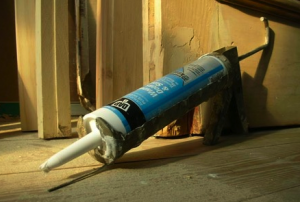
At Savannah Technical College today, President Obama gave us more information about the proposed Home Star program, also known as Cash for Caulkers. The idea behind this program defines the Washington cliché win-win because it will put contractors and other home improvement professionals back to work while reducing home energy costs.
Last year, I sat at a Home Depot in Alexandria, Virginia as the President first announced his desire to give homeowners a financial push to make their homes more energy efficient. It is encouraging to hear the President continue to preach home energy efficiency today and I hope Congress will continue to work hard to make this a reality.
And there is certainly work to be done, since Congress has the final say on this program and it is certainly not a done deal. Legislators are hard at work figuring out the mechanics of this program, and everything is subject to change. New programs like this, no matter how beneficial, must be thoroughly scrutinized before becoming law to make sure that the money gets to where it needs to go in a timely fashion. Certainly, this is not an easy job.
Today, Obama explained that the Home Star proposal would provide rebates that would go to consumers making improvements when they are purchasing efficient products and efficiency services. The program has two types of rebates: Silver Star and Gold Star. The Silver Star rebates would provide $1,000 to $1,500 to consumers for each straightforward upgrade, like adding insulation, duct sealing, or purchasing new efficient water heaters, HVAC units, roofing and doors. Consumers may get up to $3,000 in Silver Star rebates.
The Gold Star Rebates are where consumers get the best bang for the buck. Gold Star would offer a $3,000 rebate for a retrofit based on a home energy audit that will save at least 20 percent on energy consumption. The Gold Star rebate would increase for every additional 5 percent of energy saved. No rebates, Silver or Gold, could exceed 50 percent of the total project cost.
A bit of simple math is all it takes to get motivated about this program. The average energy bill in this country is around $2,400 a year. A retrofit resulting in 20 percent savings is $480 per year, or about $40 a month. A 50 percent savings would be $1,200 a year, or about $100 per month. Of course the actual monthly savings will fluctuate, but you get the idea.
Not only are American homes so wildly inefficient that billions and billions of dollars in wasted energy are holding back our economic recovery, but fixing our leaky homes has the potential to create countless high quality jobs that cannot be sent overseas. There are well over 100 million homes in this country and nearly all of them can slash their energy use by half with off the shelf technology. With home efficiency, we will not be limited by the amount of work that needs to be done, but rather the amount of people out there to do the work.
This post originally appeared on NRDC's Switchboard.
Lane Scott works on Building Energy Policy for the Natural Resources Defense Council in Washington DC. NRDC is a non-profit organization dedicated to protecting the environment, people and animals. NRDC was founded in 1970 and is comprised of more than 300 lawyers, scientists and policy experts, with more than one million members and e-activists.

